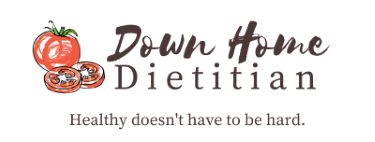Do you have a favorite family recipe that you’d like to improve on? Are you interested in learning how to be a more mindful and health-conscious cook? Use this list of cooking substitutions to improve the nutritional quality of your favorite recipe!
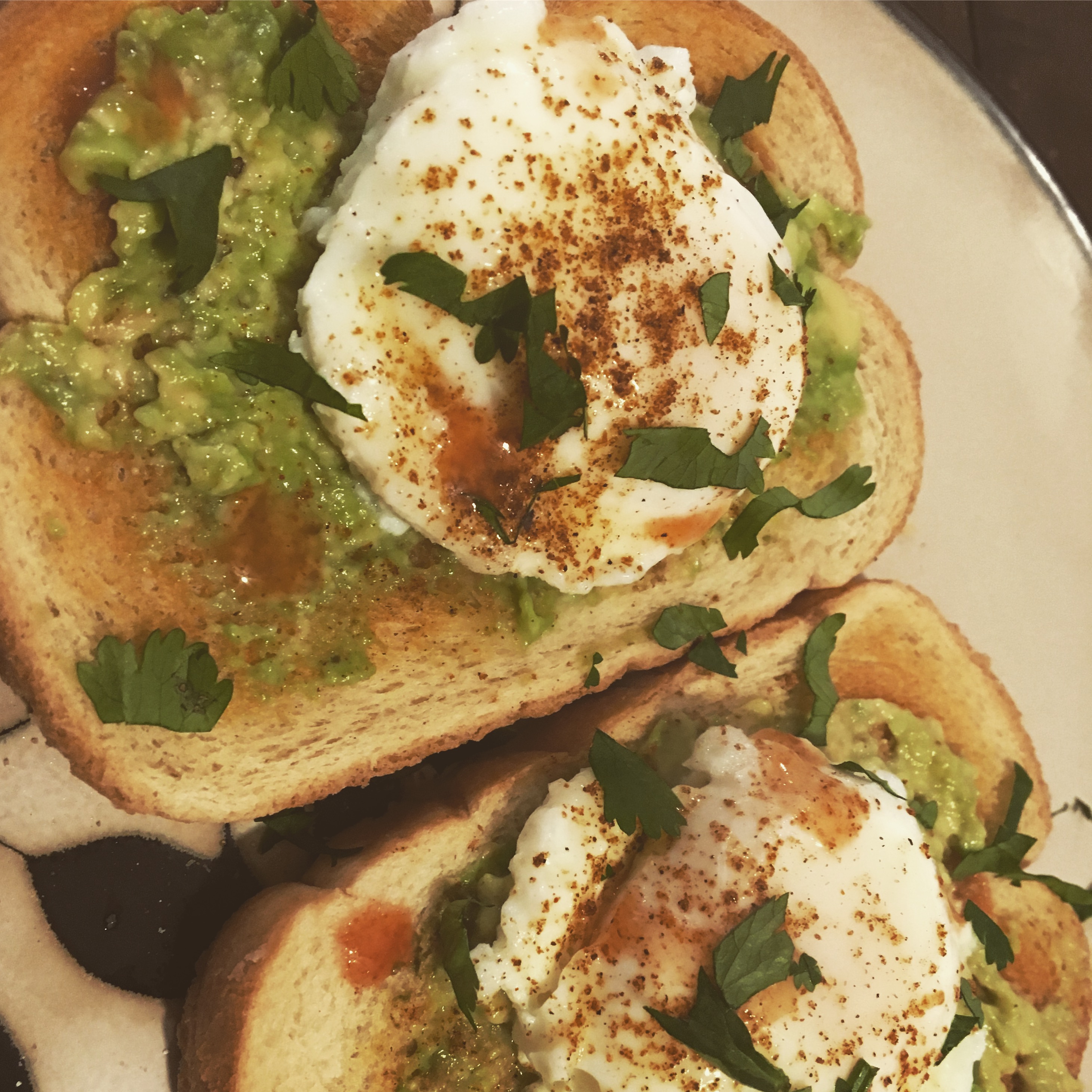
Some tips to keep in mind:
- Think of substitutions in cooking as “trial and error.” Sometimes they’ll work out great and other times they might flop, but it’s all part of the process. Every recipe is different – you’ll never know unless you try!
- If you’re tweaking an old favorite recipe, try changing just 1-2 ingredients at a time. Then, if it doesn’t turn out, you’ll know which change didn’t work.
Happy cooking (and eating)!
| If your recipe calls for… | Try this instead… | For this nutritional benefit… |
| Condensed milk or evaporated milk | Evaporated skim milk |
|
| Sour cream | Nonfat plain Greek yogurt or (depending on the texture desired) nonfat cottage cheese |
|
| Cream cheese | Neufchâtel cheese (find it right next to the cream cheese in most grocery stores) |
|
| Bacon | Canadian bacon, turkey bacon, or lean prosciutto |
|
| Mashed potatoes | Steamed, pureéd cauliflower |
|
| Potatoes | Sweet potatoes |
|
| White rice or pasta | Whole grain pasta, brown rice, bulgur, couscous, barley |
|
| No vegetables | Add any vegetables you have around! |
|
| Butter | Canola oil or avocado oil |
|
| Salt | Herbs (oregano, parsley, thyme, sage, basil, chives, garlic), spices (turmeric, cumin, curry, lemon pepper, black pepper), lemon juice, or use half the salt |
|
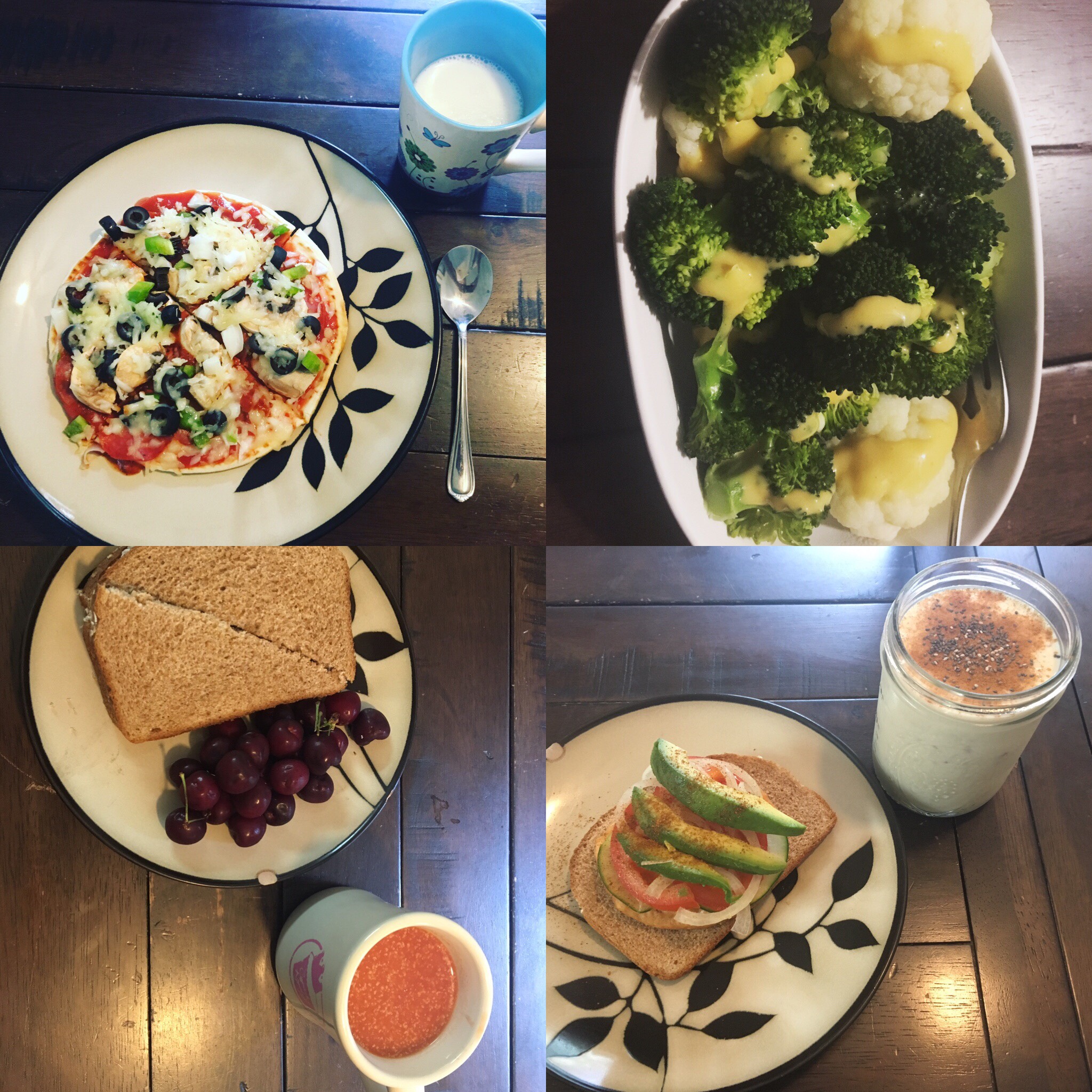
Thanks for being patient with me as I navigate the land of the computer-less. I’m still on the hunt for a new Surface Pro.
Meanwhile, I finished my anti-inflammatory diet on Monday. I was telling my husband that this has to be in the top two for the most enjoyable eating style I’ve tried (tied with carb counting). You can still eat most anything, and it truly makes a difference for me to mentally focus on getting in good stuff rather than cutting out “forbidden” foods (like when I was on Paleo).
I can’t say that I felt much different necessarily, with the exception of one noticeable thing. Plug your ears if it weirds you out guys, but when the natural disaster occurred this month, my normally 4-6 level cramps were easily only 1-3. I’ve noticed before that there is a connection between my hydration/diet and my cramps, but this was pretty dang sweet.
Eating an anti-inflammatory diet was mildly restrictive, but largely enjoyable. I didn’t mind adding chia seeds and avocado to stuff and including lots of spices – they add tons of flavor and keep food interesting! Overall, anti-inflammatory is one of my favorite eating styles to date. I will blog more soon about the specific types of conditions/people that can benefit from eating this way. In the meantime, enjoy your Father’s Day weekend!
Depending on who you ask, you might find anti-inflammatory recommendations that encourage complete elimination of sugar and carbohydrates to decrease inflammation. As is frequently the case, though, those recommendations are likely unnecessary extremes and everything is case-by-case. For one thing, you can probably achieve the anti-inflammatory benefits you’re looking for while still including well chosen, nutrient dense complex carbohydrates. Secondly, why over-restrict if we can still enjoy some tasty treats in moderation? That’s how we balance meeting health goals and living a life we love! So what does the research actually say about carbs and inflammation?
Multiple studies have linked consumption of concentrated sugar and simple carbohydrate consumption with increased levels of inflammation.1-2 A long time ago I talked in this post about what happens when we eat carbs and how we break them down into blood sugar to use as fuel. Those fuels are stuck in the blood until insulin comes around to let them in to our cells. High blood sugars, especially over the long term, correlate with inflammation in several types of tissue in the body, including fat cells.3
A strong link has been drawn between chronic inflammation and insulin resistance.4 This is a vicious cycle because (as you may remember from this post) insulin resistance means that blood sugars get stuck in the blood without a way out, causing fat storage and inflammation. Stored fat then produces inflammatory factors which make insulin resistance worse! Not fair.
So what can we do about it? Well, we can aim to cut inflammation off at the pass by changing parts of our lifestyle and the foods we eat to combat inflammation and give our cells a helping hand with that blood sugar. With regard to carbohydrates, we can do a couple of things specifically:
- Focus on eating more complex carbohydrates than simple carbohydrates like sugar. What does that mean? Well, complex carbohydrates are long chains of sugars that take much longer to digest, break down, and enter our blood, thus making our blood sugar much more stable (and preventing inflammation from blood sugar spikes). Simple carbohydrates are individual sugars or tiny chains of sugars that break down very quickly and enter the blood rapidly, causing a sharp spike in blood sugar that is inflammatory. Complex carbohydrates like whole grains, beans, and vegetables are connected with lower levels of inflammation.5 Same goes for high-fiber carbohydrates like fruit.
2. Avoid eating too much carbohydrate at once. Just like with diabetes, the key to preventing carbohydrate-induced inflammation is keeping the blood sugar from going too high. Eating controlled amounts of carbohydrate throughout the day can help keep your energy up and your inflammation down.
- http://ajcn.nutrition.org/content/94/2/479.short
- https://www.hindawi.com/journals/mi/2013/509502/abs/
- http://www.jbc.org/content/280/6/4617.short
- https://www.jci.org/articles/view/19451
- https://www.ncbi.nlm.nih.gov/pubmed/17391554
Today marks the end of my first week following an anti-inflammatory lifestyle. I haven’t posted much this week because we were busy (or actually, quite un-busy) camping and relaxing with family this weekend! So far, anti-inflammatory is going pretty well and I’m enjoying the food I’m eating. It’s not really any more expensive than our food usually is.
What’s working well: Activity has been so easy with the beautiful weather! We spent the weekend (besides lounging and reading in hammocks and lawn chairs) kayaking and playing volleyball, badminton, and croquet. The other big key to easing anti-inflammatory eating is keeping my mindset focused on two things: 1) I focus on the importance of getting in anti-inflammatory foods – it’s not just about limitations and restrictions, and 2) thinking about the effect that all of the anti-inflammatory foods have on my body. It helped me to think about those consequences, then I still might decide the food was worth it to me to eat, but I had a balanced perspective and it was typically easier to avoid treats I really didn’t care about as much and limit my portions of those I did. Here are some photos of foods I ate throughout the week:
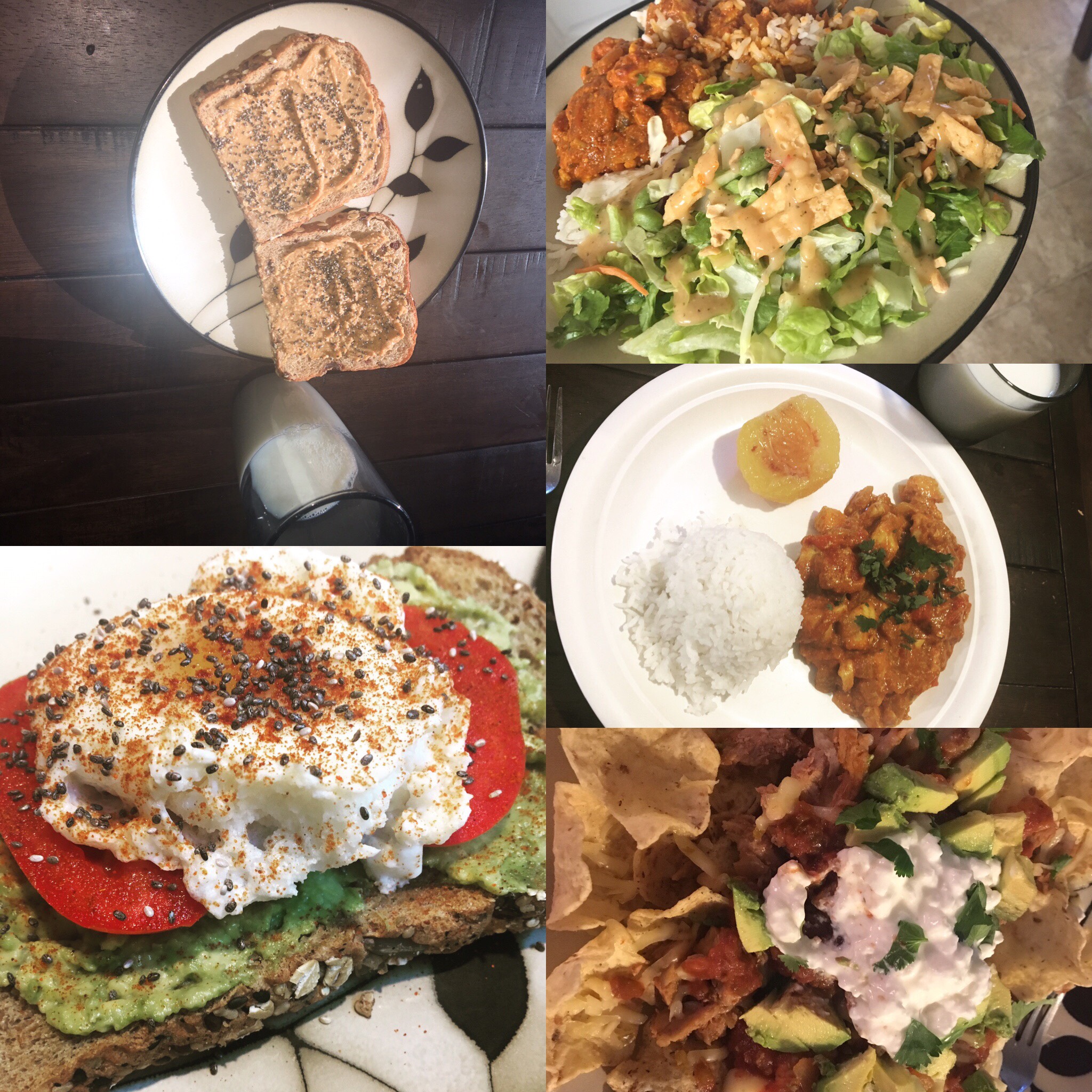
Some struggles I’ve had: Choosing food this weekend was definitely tough! We assigned meals to different family members for camping so I didn’t have a ton of control over what was available at each meal. I chose as best I could by loading up on the veggie and fruit and limiting any entrees, sides, or desserts that were particularly high in sugar or saturated fat. Thankfully, my family is relatively health-conscious so there tended to be plenty of fruit or veggies available. My aunt made some lavender lemonade that was TO DIE FOR and we had a birthday party during the weekend as well, so I had tiny bits of treats spread out throughout the four days. I scraped the frosting off of a small piece of cake and chose only bites of the superb homemade ice cream my brother and sister-in-law made. The holiday weekend was definitely more “pro-inflammatory” than the rest of my week, but hey, that’s life! Check out the photos below to see some of the meals and snacks I ate this weekend.
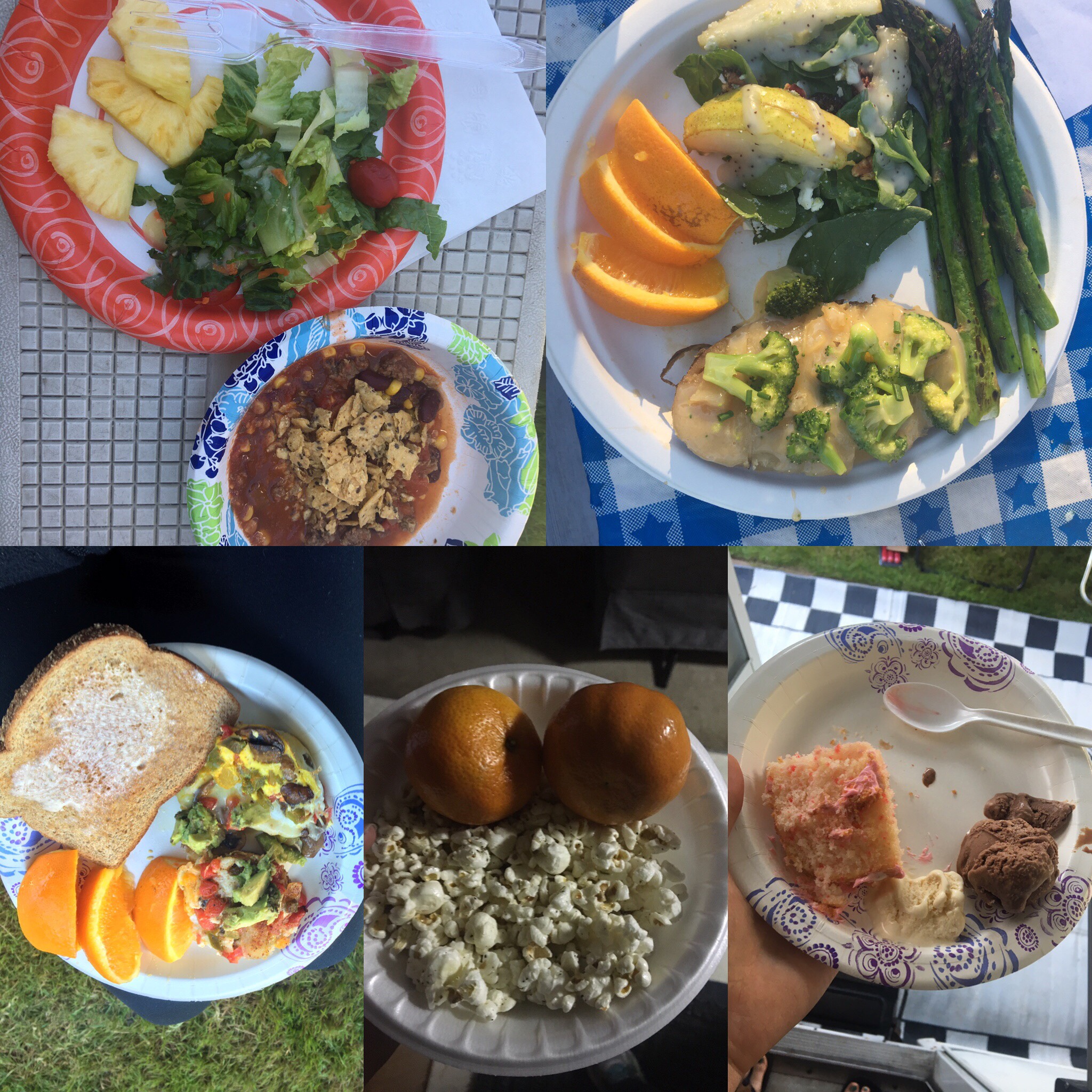
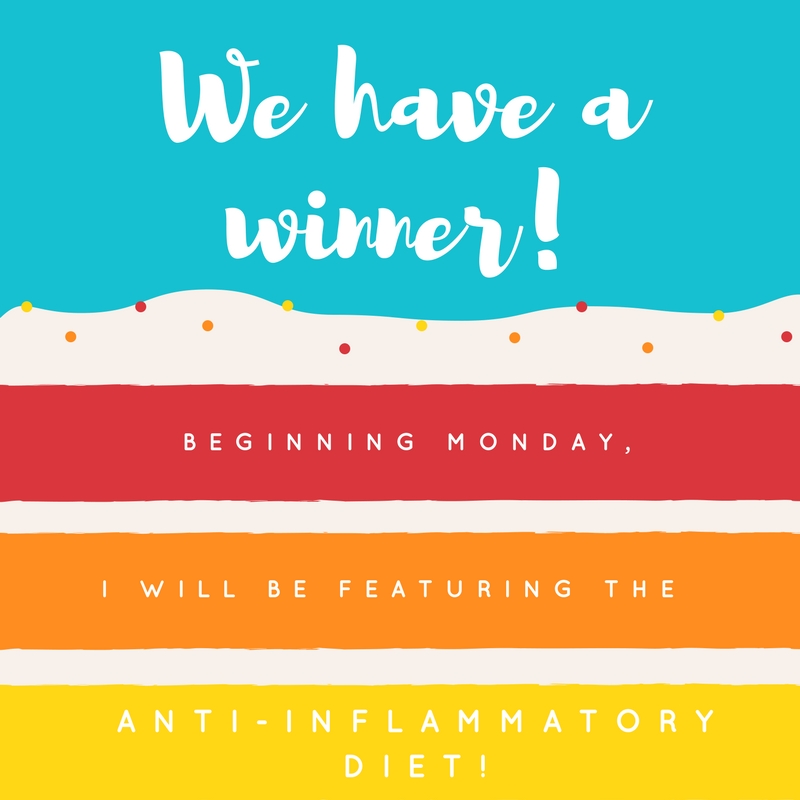

Your voices have been heard! The anti-inflammatory diet came out on top with more than double the votes of either of the other two options.
As a quick overview, there is not truly one well-defined and well-recognized “anti-inflammatory diet” per se, but rather we have a lot of research about how food affects inflammation in the body that we can leverage to decrease inflammation. In the coming weeks I will bring you information on what inflammation is, whether or not we really need to fight it with food, and what the research is telling us about lifestyle changes you can make to affect your levels of inflammation.
Sit back and relax because you’ll have plenty more info on anti-inflammatory eating coming your way soon!
 I’m gearing up for my next “diet” and I want to know what you want to know more about! Here are some suggestions:
I’m gearing up for my next “diet” and I want to know what you want to know more about! Here are some suggestions:
Vegetarian Diets
There are many varieties of vegetarians, but in general, they don’t eat meat and/or animal products for either health or ethical reasons. Some vegetarians (called pescatarians) eat only fish and no other meats, while lacto-ovo vegetarians eat eggs and dairy products. Vegans avoid eating any food that is or contains animal-based products. More recently, the term flexatarian was introduced as a name for people who are trying to eat fewer animal products, but are not quite ready to make the leap to cutting them out entirely.
Gluten-Free for Celiac Disease
Gluten-free eating has been very trendy as of late, but originally the only people who focused on cutting out gluten were those who have a serious condition called celiac disease, in which their body has an auto-immune response to the protein gluten, which is found in wheat, barley, and rye products.
Anti-Inflammatory Diet
This is an eating style I recommend for people who are struggling with inflammatory conditions (anything from inflammatory bowel disease to arthritis to diabetes and more) to reduce the overall amount of inflammation in their bodies. In general, the principles of anti-inflammatory eating are beneficial for most Americans because our typical diets tend to be pretty pro-inflammatory.
Low-Purine for Gout
People who have an inflammatory condition called gout accumulate painful crystals in their joints in response to the amino acid purine. During a flare-up, they typically must follow a low-purine diet (and often times take medications) in order to help resolve the intense joint pain.
Low-FODMAP for Irritable Bowel Syndrome
This tricky-to-follow but yet-so-worth-it diet can provide seemingly miraculous relief for those suffering from irritable bowel syndrome (IBS). For many years, the causes of the digestive symptoms of IBS were not understood, and these people suffered for a long time. Thanks to Monash University in Australia, so much more is understood about IBS and following this diet process can lead to HUGE improvements in symptoms.
Comment on this post (or on Facebook or on Instagram) with the eating style you would like me to feature next – these are just ideas, feel free to suggest anything you want! The top three suggestions will be put in my next poll for voting.

Diet culture is determined to tell you that you have to be miserable to be healthy.
That couldn’t be more wrong.
Subscribe to learn how to go from a frustrated, restricted dieter to a happy, relaxed relationship with food and fitness. Healthy doesn’t have to be hard!
